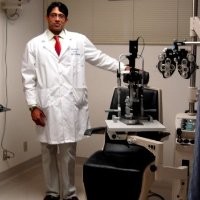In a groundbreaking study spearheaded by neuroscientists at Georgetown University, it has been discovered that the brain’s primary visual cortex, which is responsible for receiving and interpreting visual data in those with sight, develops distinct connectivity patterns in individuals who are born blind. These unique patterns are likened to fingerprints, being exclusive to each person.
The research, published on July 30, 2024, in the Proceedings of the National Academy of Sciences (PNAS), holds significant implications for our understanding of brain development. It could potentially pave the way for personalized rehabilitation and sight restoration strategies.
It’s been known for several years that the visual cortex in people born blind reacts to a wide array of stimuli, such as touch, smell, sound localization, memory recall, and response to language. However, the lack of a common thread linking these activities that trigger primary areas in the visual cortex has been a puzzle for researchers. This study, spearheaded by postdoctoral researcher Lenia Amaral, PhD, and Ella Striem-Amit, PhD, the Edwin H. Richard and Elisabeth Richard von Matsch Assistant Professor of Neuroscience at Georgetown University’s School of Medicine, offers an intriguing explanation: the idiosyncratic ways in which each person’s brain organizes itself.
Striem-Amit, who heads up the Sensory and Motor Plasticity Lab at Georgetown, explained that the visual cortex connectivity’s consistency is usually seen in those who have sight. However, in those born blind, the connectivity pattern is more varied across individuals, akin to an individual fingerprint that remains stable over time. This distinct pattern can even be used to identify the individual.
The study was conducted on a small group of people born blind, who underwent repeated functional MRI scans over a span of two years. The researchers were able to analyze neural connectivity across the brain using a neuroimaging technique.
Amaral highlighted that the visual cortex in those born blind showed an impressive stability in its connectivity patterns over time. Whether the participants were identifying shapes, localizing sounds, or just at rest, these patterns remained consistent. They were unique to each individual and remained stable throughout the two-year study period.
The findings provide valuable insight into how the brain develops, according to Striem-Amit. She suggests that experiences after birth can shape the diverse ways our brains can develop, especially in cases of those without sight. The brain’s plasticity in these cases allows it to develop in a variety of ways, potentially even finding different uses for the visual cortex among those born blind.
By understanding each person’s individual connectivity, the researchers believe they can better tailor solutions for rehabilitation and sight restoration for those with blindness. Each solution would be based on the individual’s unique brain connectivity pattern.
The authors of the study have declared no personal financial interests related to the study.
The research was funded by a grant from the National Institutes of Health NEI/OBSSR (R01EY034515) and funds from the Edwin H. Richard and Elisabeth Richard von Matsch Distinguished Professorship in Neurological Diseases.


Comments are closed for this post.